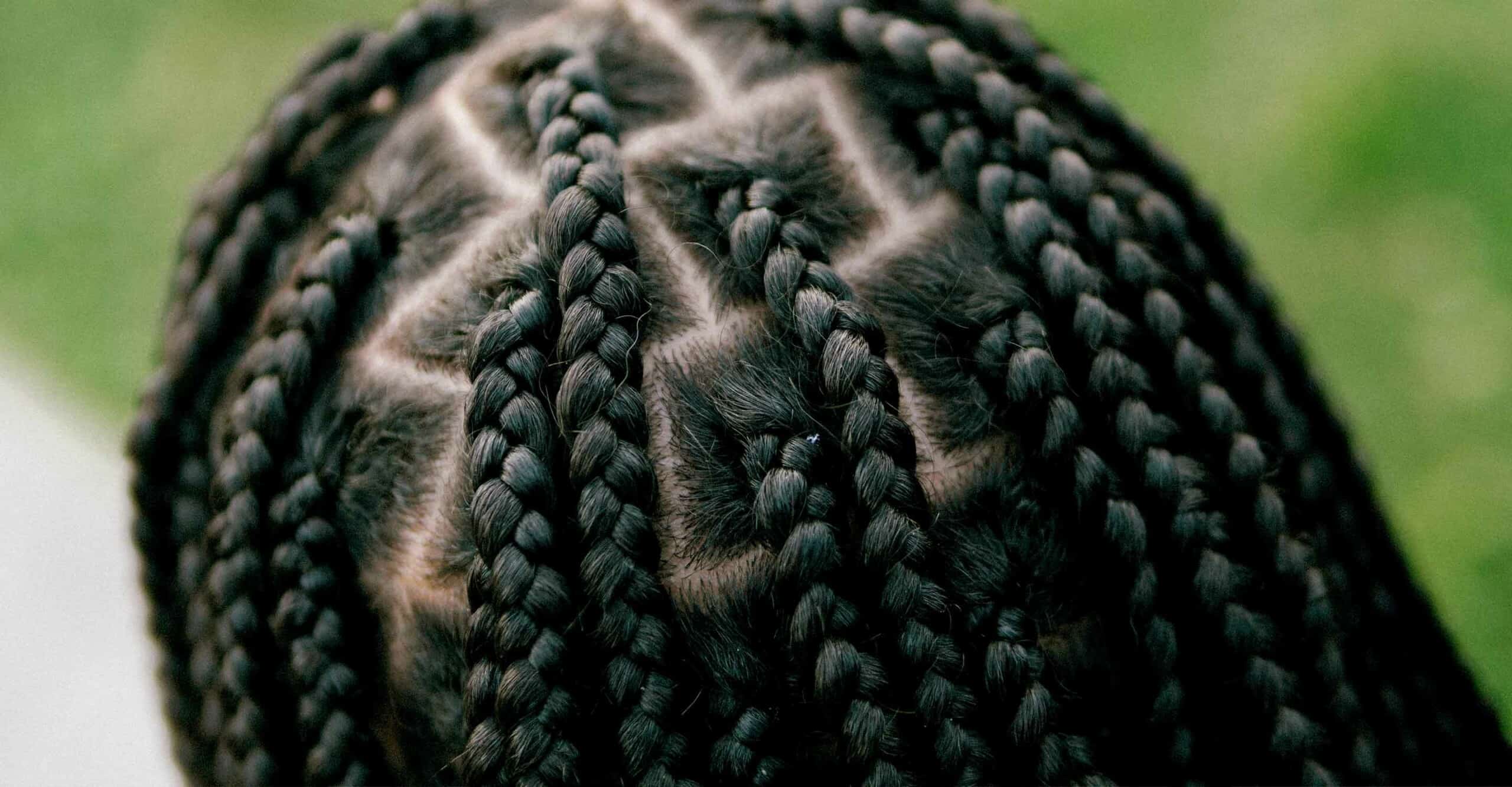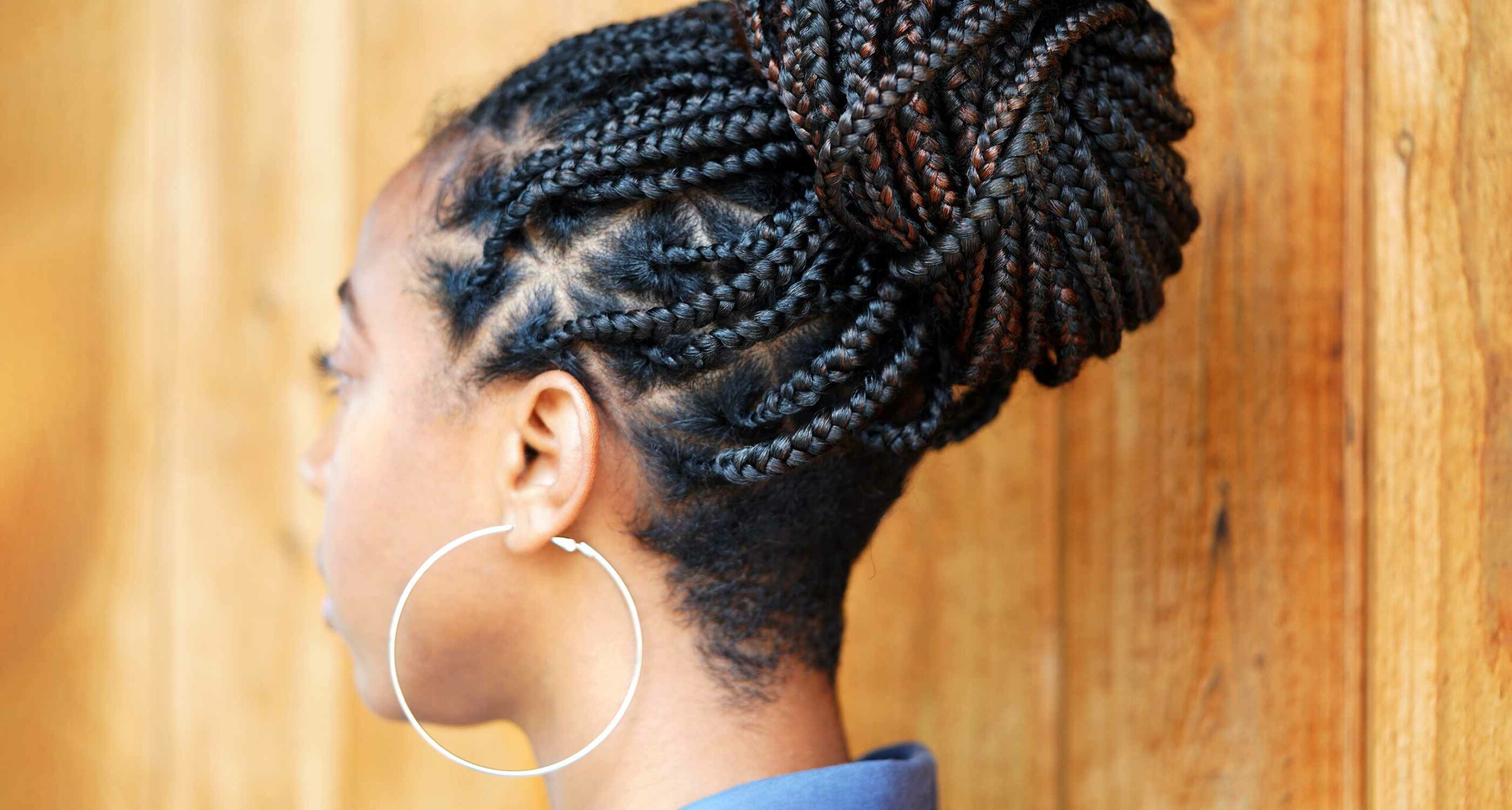A Guide to Knotless Braids
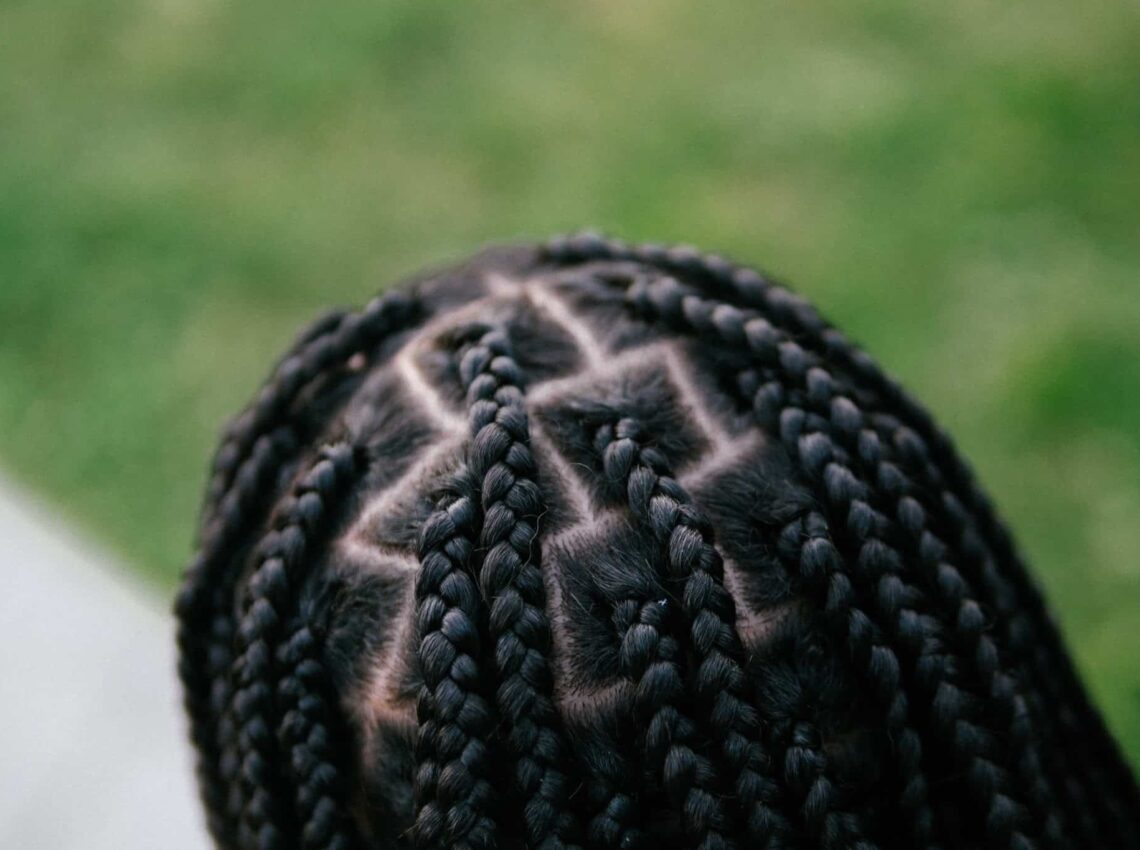
You’ve been thinking a lot about knotless braids recently, and it’s no wonder. They’ve been popping up everywhere. You see them all over your Instagram feed, and it seems like everybody is rocking them right now: your good friends, your colleagues at work, even celebrities like Willow Smith. So what’s the deal?
Everybody is right to be obsessed. Out of all the popular braid styles, knotless braids are super chic and flattering, plus they have a lot of benefits for your hair, are painless to have done, and are easy to maintain. So if you’ve found yourself wondering, “what are knotless box braids?,” or are curious about having them done yourself, check out this 101 on all things related to knotless braids. Let’s dive in!
What Are Knotless Braids?
Knotless braids are a protective braided hairstyle done with a different technique than box braids. With many Black braided hairstyles, such as box braids, the hairdresser starts braiding hair at the root and adding in extensions right away. Knotless braids don’t start at the roots. Instead, with this braiding technique, the stylist adds hair extensions throughout the braiding process, which makes knotless braids more flexible.
You can also do more than knotless box braids. So if you’ve been asking yourself what are knotless crochet braids, or are those even an option, they absolutely are! The main difference between the two braiding techniques is that regular crochet is looped through the cornrow twice, while knotless crochet is only looped through once.
Benefits of Knotless Braids
So now you know what knotless braids are, but why are they better than styles like traditional box braids? Knotless braids have many benefits, such as:
- Less hair breakage – Because the extensions don’t start at the roots, knotless braids don’t cause tension at the scalp. This difference means less breakage and more protection for your natural hair.
- There’s no waiting period between braiding and styling – The installation process for knotless braids makes them more flexible and allows you to style them right away. You don’t need to wait for them to get looser first.
- Pain-free – This is one of the biggest differences between knotless braids vs box braids. Since there’s no knot at the root, knotless braids don’t tug on the scalp like traditional styles. That means having them done is a painless experience!
- Style versatility – There are lots of ways to style your knotless braids. You can play around with the color, length, add accessories, and style the tips differently.
In addition to these perks, knotless braids are also a more natural look that doesn’t require much upkeep.
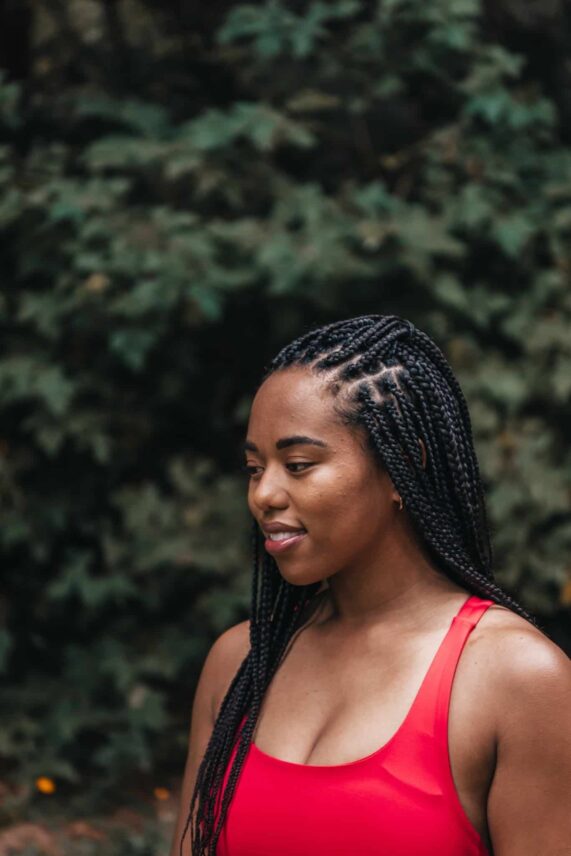
How to Care for Your Knotless Braids
Maintaining your knotless braids is easy and straightforward. You just need to follow these three main rules:
- Moisturize your scalp – This can be done a couple of times a week using oils on your scalp and a simple leave-in spray.
- Keep your hair protected – Sleeping with a silk pillowcase or using a satin head scarf will stop your scalp from getting dry overnight and keep your hair fresh.
- Get your edges redone – When you wear a protective hairstyle like knotted braids, your roots will start to grow out. Instead of having the whole process redone, your stylist can touch up and reinstall the braids along your roots.
It’s also a good idea to avoid leaving your hair in high tension hairstyles like a high ponytail for extended periods since these kinds of styles can hurt your hairline over time. You can look and be fabulous while wearing a variety of knotless braid styles responsibly.
Types of Knotless Braid Hairstyles
One of the best parts of having braids is how many different ways you can style them. From the color to the length to the many ways to accessorize, you can truly have the braids of your dreams. Some chic knotless braid looks are:
- An updo
- A high ponytail
- Rainbow knotted braids
- Knotted braids with curly ends
- A simple, classic bun
- A two bun look
- Knotless goddess braids
- A ponytail accessorized with a scarf
- Waist-length or longer knotless braids
- Accessorized braids with beads and jewelry
- Slicked back knotless braid hair
- Ombre knotless braids
- Just flowing down. Sometimes natural is the best style!
The length and thickness of your braids can also be important factors in how you style your hair and can help determine what types of styles will work best with it.
Braid Length and Thickness
With so many options to choose from, such as long to short and thick to thin to jumbo, figuring out precisely what you want can be tough. So here are some tips to help you:
- Braid thickness affects the overall hairstyle – Some hairdos like jumbo knotless braids are meant to be worn for shorter times than other knotless styles. Smaller knotless braids will last longer and give you the best protective benefits of the hairstyle, allowing your natural hair to grow.
- Some braid sizes are better for newbies – Stylists may sometimes recommend medium knotless braids for those new to the experience. They do this because medium braids don’t take as long and need less hair, getting you looking fabulous faster.
- Pick lighter extensions – Lighter extensions will make your braids feel less heavy, so they don’t pull on your scalp.
- Find a professional – There’s no substitute for professional advice. Having someone to help you make up your mind when you’re unsure can be a lifesaver as a professional stylist can offer so many natural hair care tips, as well.
These kinds of decisions about braid length and thickness affect how much your salon visit will wind up costing overall. So, finding a stylist who knows exactly how to help if you don’t have a final look planned can help a lot.
How Much Do Knotless Braids Cost?
The price range for knotless braids can vary a lot depending on what you want done. The estimated cost can be anywhere between $150-$600 depending on:
- The technique used
- The style and color
- What type of braid you get, since thinner, longer ones tend to be more pricey
If you think those prices sound like a lot, and are considering DIY braids, don’t. A professional stylist knows how to do a number of things you don’t that can massively improve how the braids will turn out:
- Tailor the extensions – A professional knows how to ensure the extensions they’re working with are perfect for your crown so that the braids will look their best.
- Use proper tension– Stylists know how much pressure to use throughout the braiding process, so your braids don’t tug on your scalp. If you braid yours with the wrong amount of tension, you can unintentionally stress your roots and cause hair breakage.
- Order the right amount of extensions – DIY doesn’t mean free, and you’ll have to order these yourself. There’s a chance you could order too few and then need to wait for another shipment or order too many and waste money.
You don’t need to worry about any of these things if you see a professional. Some platforms make it very easy for you to find a trusted and knowledgeable hairstylist, so please spare your hair the breakage.
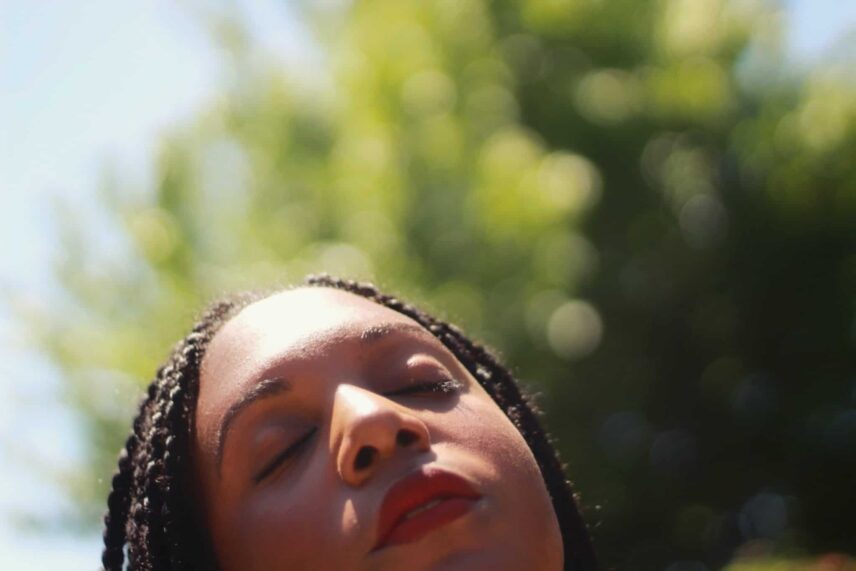
How Long Do Knotless Braids Last?
Hair professionals agree that knotless braids can last for around two to three months as long as a client takes proper care of them. To extend your braids’ life, you should:
- Go to the salon for touch-ups
- Keep your scalp moisturized
- Deal with buildup as soon as you see it
Stylists will tell you that the main issue with wearing this style for too long is not the braids themselves. Instead, it’s that leaving your hair in a protective style for too long is not suitable for your hair. So, as sad as it may be when that third month rolls around, you’ll need to make an appointment to have them removed.
Looking Your Best Has Never Been Easier With Styleseat
Living in the city means there can be an overwhelming amount of options for finding a hair professional. Because there are so many stylists to choose from, it can be tricky to figure out how to find a good hair braider. How do you know who’s doing the type of knotless braid you want, and how do you make sure the stylist you’re interested in is knowledgeable and someone you can trust?
With StyleSeat’s salon booking app, all this information is at your fingertips since our easy-to-use platform takes the hassle and legwork out of finding a stylist. So to get those knotless braids you’ve seen your friend rocking, all you have to do is pull up our website to search for qualified stylists. Then type “knotless braids” in the search bar and insert your location. It’s that easy!
Not only does StyleSeat give you a complete list of all the professionals doing knotless braids near you, but it also makes it simple to learn more about them. All stylists’ ratings appear under their names, and clicking on them also tells you their hours, complete list of services, and cancellation policy. And to book, all it takes is a few clicks. If you want to learn more about other hairstyles and are asking questions like, “What are tribal braids?” or “What are fulani braids?”, you can also check out our blog for guides on different hairstyles.
So whether you’re looking for the best hair braiding San Diego, New York, or Atlanta offers, let us make it easy for you to get the knotless braids of your dreams. Book an appointment with StyleSeat today!
Sources:
Harper’s Bazaar. Everything You Need to Know About Knotless Braids. https://www.harpersbazaar.com/beauty/hair/a34741180/knotless-braids/
Good Morning America. 5 reasons why women are opting for knotless box braids. https://www.goodmorningamerica.com/style/story/reasons-women-opting-knotless-box-braids-64685857
Glamour. Your Ultimate Guide to Knotless Braids. https://www.glamour.com/story/knotless-braids-guide
